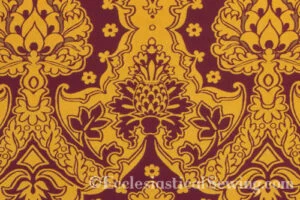
Each fabric is beautiful in its own special way, be it color, pattern, texture, or drape. Each has characteristics that lend it to be the perfect liturgical fabric for special use. The fiber contents are as varied as the patterns, fabrics, and weaves. The price points range from moderate prices for churches on a budget, to exclusive silks and cloth of gold fabrics intended for unique and special sacred vestments. There are solids, piece-dyed, and yarn-dyed fabrics, brocades, metallics, plain weaves, and crisp linens that range from the brightest whites to the deepest and richest violet, and the warmest and richest golds and vibrant reds.
Like this:
Like Loading...
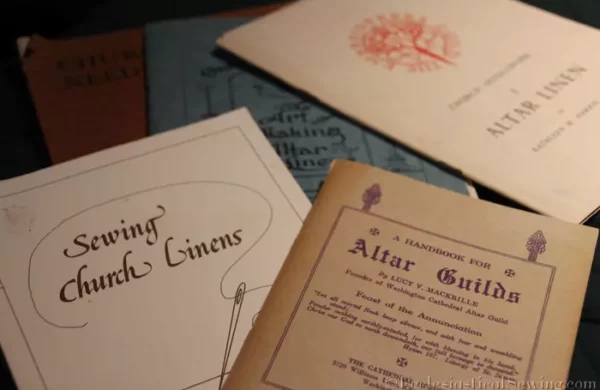
Fair Linens are hand hemmed with a simple slip stitch worked in even tiny stitches. The quality of the hand hemming is determined by the number of stitches made in each inch of length, as well as the evenness of the stitching. To aid in obtaining even, tiny stitches, use a single strand of fine cotton thread such as YLI Heirloom Thread which is a 100/2 size, or a similar fine sewing thread.
Like this:
Like Loading...
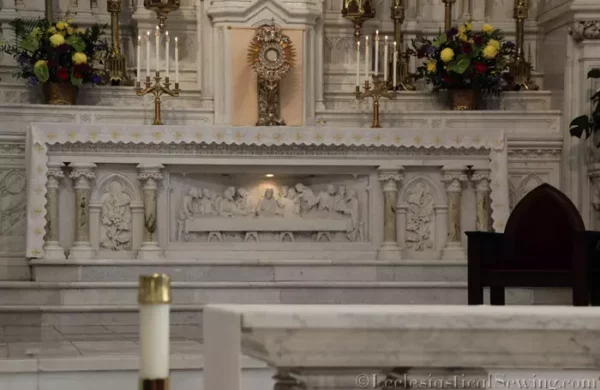
The measurement of making an Altar Fair Linen – The altar height: measure from the top edge of the altar to the floor. Measure the width of the altar from the front to the back. Measure the length of the altar from one side to the opposite side. Optional: measure the hang from the top edge down the side of the Fair Linen to match the length of an altar hanging.
Like this:
Like Loading...
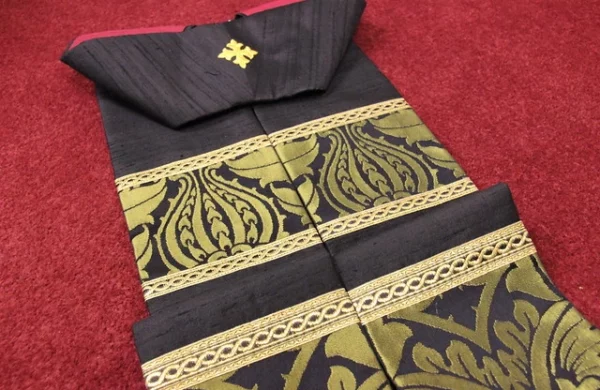
Finished Fairford Black/Gold Pastoral Stole, a farewell gift for our pastor. This stole is perfect for Ash Wednesday and Good Friday. The black silk dupioni and Fairford brocade orphrey bands in black/gold create a stunning look. with a budget-friendly materials like silk dupioni and the beautiful St. Benet braid trim. Added a cross and chain for the finishing touch.
Like this:
Like Loading...
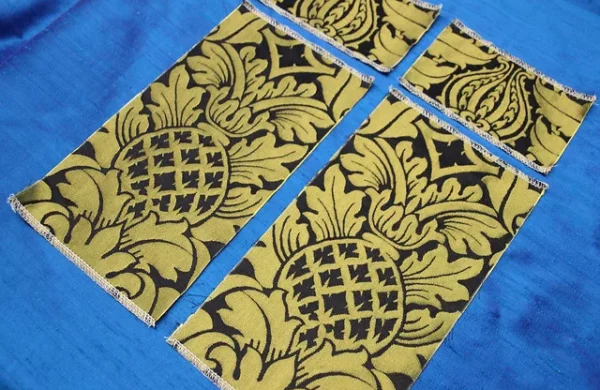
The St. Benet Black/gold trim is an excellent choice for either colored stole, as is the Black Dice trim, or the Gold St. Paul Braid.
Like this:
Like Loading...
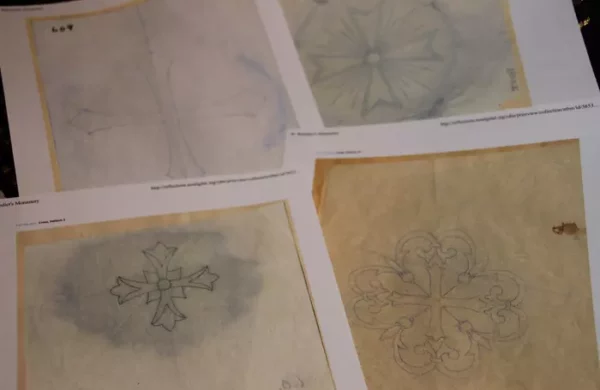
Fairford brocade offers two motifs: a pineapple and an ogee design. Choose the pineapple for the lower band and align it within selected cutting lines. Ensure minimal waste and use the ogee design for upper orphrey bands. Draw cutting lines with tailor’s chalk once satisfied with the design. Cut the motifs carefully, considering future usability of small fabric pieces.
Like this:
Like Loading...
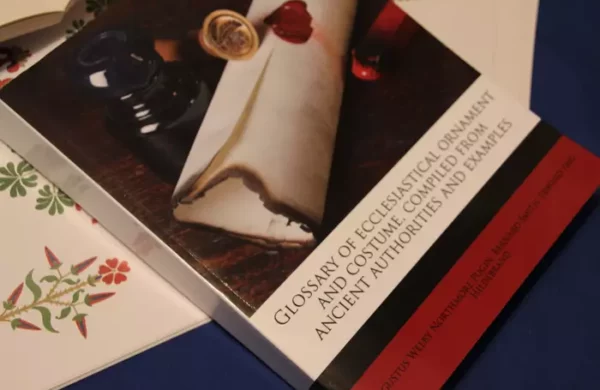
Glossary of Ecclesiastical Ornament, Augustus Pugin refers to ornamented garments of this type worn by ancient Romans as auriclavae or clavatae. Tunics were ornamented with a band referred to as a clavus or clavi. The bands, which were often purple in color, were sewn onto tunics.
Like this:
Like Loading...
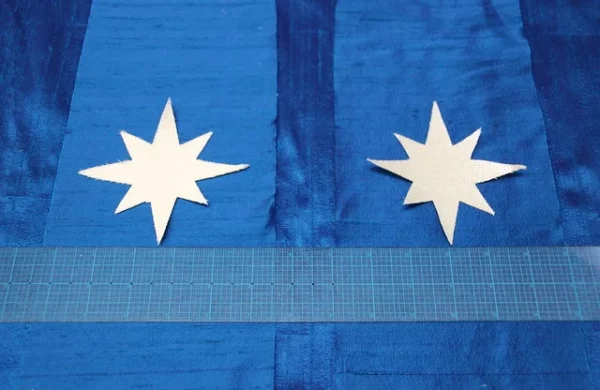
The design motif for the Advent stole is a simple star worked in Cloth of Silver. This simple design would be great to work with an embroidery patch and heat press system. The stars are outlined with a satin stitch, and detail stitches are added in the centers. A few additional stitching lines may be added to create the rays that “shine on the place where the Christ Child lays.
Like this:
Like Loading...
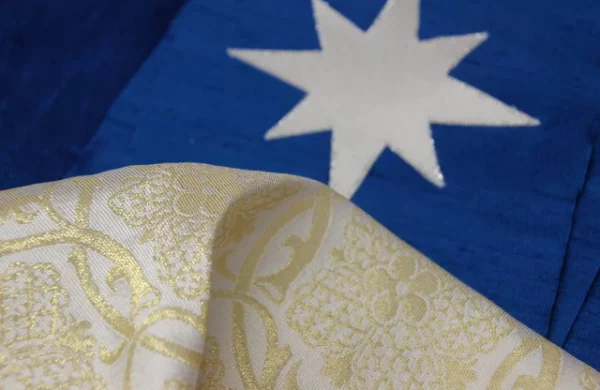
Advent stoles. Using cloth of silver, this star shape will be cut and appliqued to the stole, and outlined with a soft metallic gold thread.
Like this:
Like Loading...
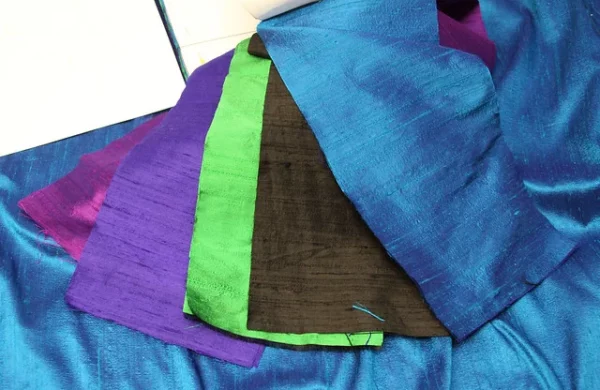
Stole Set It has been far too long since any new projects have been underway in the Ecclesiastical Sewing workroom. For tonight, we shall have a quiet peek at… Read more Stole Set →
Like this:
Like Loading...
Update on Changes Update on Changes. Getting a new online business up and rolling has its fair share of challenges. There are samples to collect, fabrics and trims to source, patterns to draft, and sample garments to create. Throw in a few life moments like a college graduation, wedding, and a remodel, along with numerous photography sessions needed to capture images of stunning Ecclesiastical Fabrics and trims…..and yes, it does take time to pull it all together. The original plan was to launch the new online storefront in early… Read more Update on Changes →
Like this:
Like Loading...
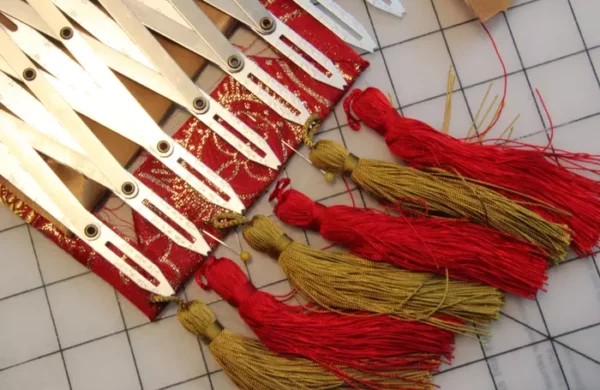
Tassels and fringe make excellent finishes for stole ends, but there are tricks for both. For tassels, use a button-hole marker to ensure even spacing. Decide on the number of tassels and the desired distance from each end, then mark and pin them in place. Tassels have a small cord or loop at the upper edge; attach it evenly. Tack the cord on the back of the stole, ensuring even hanging. In the photo, gold rayon blend tassels were initially used but later replaced with metallic gold tassels.
Like this:
Like Loading...
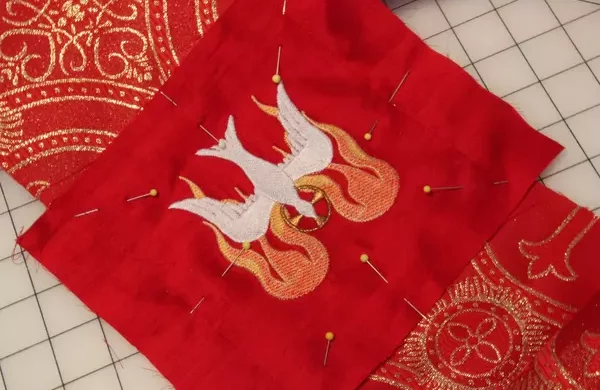
Pentecost Stoles. The first design features crossed keys symbolizing the Office of the Keys. The red silk dupioni, design with gold and bronze metallic threads, blends beautifully with red and gold brocatelle fabric and metallic galloon trim. The upper chest will showcase a descending dove with flames. and the final design will include a Bible and Sword of the Spirit, connecting to the Holy Spirit. These red Pentecost Stoles offer a reasonable budget.
Like this:
Like Loading...
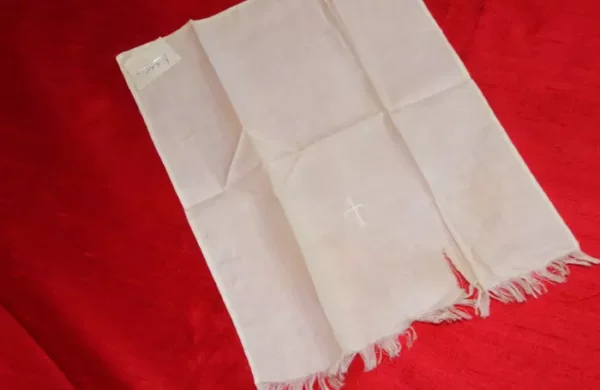
Baptismal Towels or Baptismal Napkins may be as simple or elaborate as one desires to make them. The size of this Baptismal Cloth is approximately 19″ x 21″ as the finished size. The embroidery may be a very simple hand-embroidered cross. The hems should be narrow. Now, there may be more specific instructions available in some older Church Vestment Books
Like this:
Like Loading...
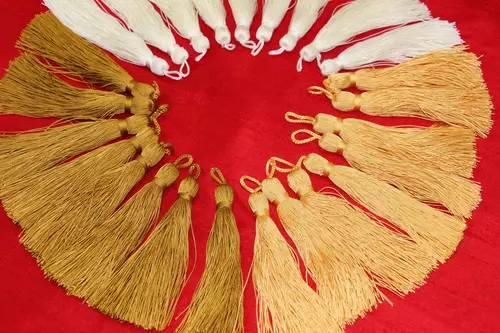
The end can have fringe on the lower edge, or the edge can have a plain hem as the finish. Creative placement of trims and orphrey bands offer other options. One of my favorite ways to finish the end of a stole is to use tassels. The tassel choices for this current stole project are a soft white or cream tassel and a gold tassel.
Like this:
Like Loading...















You must be logged in to post a comment.